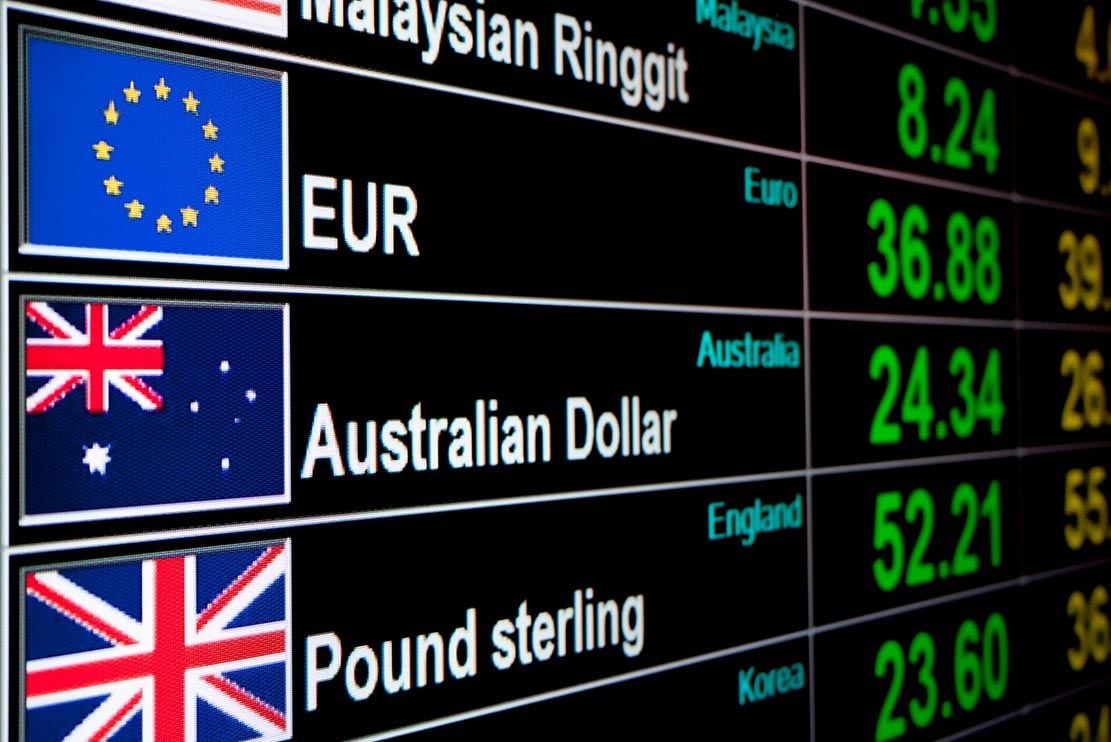Australian Dollar Upside Building Says Commerzbank
- Written by: Gary Howes
-

Image © Adobe Stock
The Australian Dollar powered higher alongside high-beta peers the New Zealand Dollar and Norwegian Krone ahead of the weekend amidst a broad improvement in risk sentiment with one investment bank tipping the advance to extend over the coming months.
Analysts at Commerzbank - the German-based global lender and investment bank - have looked into the underlying state of the Australian economy and reckon it is strong enough to ensure the Reserve Bank of Australia (RBA) sustains interest rates at elevated levels over the coming months.
"It is worth taking a second look at the data. In our view, the upside risks for the Aussie in the coming months are predominant," says Michael Pfister, FX Analyst at Commerzbank.
The call comes as the Australian Dollar-U.S. Dollar exchange rate recovers from 10-month lows with a 1.0% advance to 0.6498, as the Dollar retraces recent gains. Although the Australian Dollar has been under pressure against the U.S. Dollar, it has shown strength against the Pound, Euro and other currencies which suggests some idiosyncratic strength is building underneath the hood.
The Pound to Australian Dollar exchange rate has fallen 4.0% from the 1.99 crest registered in mid-August to 1.8872 at the time of update on Sept. 29, meanwhile, the Euro to Australian Dollar exchange rate has dipped nearly 3.0% to 1.6334.
Above: GBPAUD suggests idiosyncratic Aussie strength which is not reflected in AUD/USD (bottom).
Pfister says it was "idiosyncratic factors" that were ultimately responsible for the Aussie Dollar's poor 2023 performance ahead of the August rebound against many of its peers.
"One factor was that the Reserve Bank of Australia (RBA) quite surprisingly left its interest rate unchanged again in early August after a pause in July. Since then, the market's interest rate expectations have corrected significantly," he notes.
But Australian rate expectations have firmed of late and "the market's interest rate expectations have corrected significantly," says Pfister.
He says there remains a residual chance of another rate hike in early November, but his analysis suggests expectations could well firm up from here, which can boost the Australian Dollar over the coming weeks, if the analysis is correct.
The research finds incoming monthly inflation figures are not yet in line with the inflation target, raising the risk that the more complete quarterly inflation figure - which the RBA utilises - can disappoint to the upside.
"The bottom line is that with inflation above 5%, the RBA is still a long way from its target," says Pfister.
Above: Australian "Real GDP growth perfectly in line with trend" - Commerzbank. Chart: A$BN, seasonally adjusted at 2020 prices, pre-Corona trend (2015-2019).
Of particular concern to RBA watchers is the elevated levels of Australia's services inflation, which would warrant another hike by the central bank, potentially in November.
"As in other Western industrialized countries, the inflation driver in Australia has shifted from goods to services. And here the inflation trend is still clearly upward, even if the pace has slowed recently," says Pfister.

Above: AUD performance in 2023.
What matters, however, for the Australian Dollar and all other currencies at the current juncture is not so much the odds rate hike here or there; rather it is the rate cut profile for 2024 onwards.
This is where the juice is for currency markets at the present time and investors will penalise those currencies where rate cuts are likely to be sooner, harder and faster.
In this regard, the Australian Dollar might find itself supported if the incoming inflation data lowers the prospect of Australian interest rate cuts.
"The RBA recently reaffirmed its forecast that inflation will return to the target corridor of 2-3% by the end of 2025 - i.e. within the forecast horizon. Nevertheless, given the long time horizon and the uncertainties described above, the bar for initial rate cuts is likely to be high," says Pfister.
Elsewhere, the labour market is still considered too 'tight' by Commerzbank, resulting in low unemployment and high wages which are not consistent with sustained declines in inflation to the RBA's target.
Of course, there is also China to consider, owing to Australia's strong trade linkages with the world's number two economy and primary export customer.
The post-Covid rebound in China has underwhelmed, giving rise to much AUD underperformance over much of 2023. But Commerzbank sees signs of stabilisation in China and "the worst may be over," says Pfister.
"Further signs that China's economic growth is stabilising, albeit at a low level, should therefore ease some of the depreciation pressure on the Aussie from this side," he adds.
Putting this all together, Commerzbank looks for the RBA to strike a "higher for longer" tune on interest rates thanks to "a strong economy".
"In our view, this should support the Aussie in the coming months," says Pfister.







